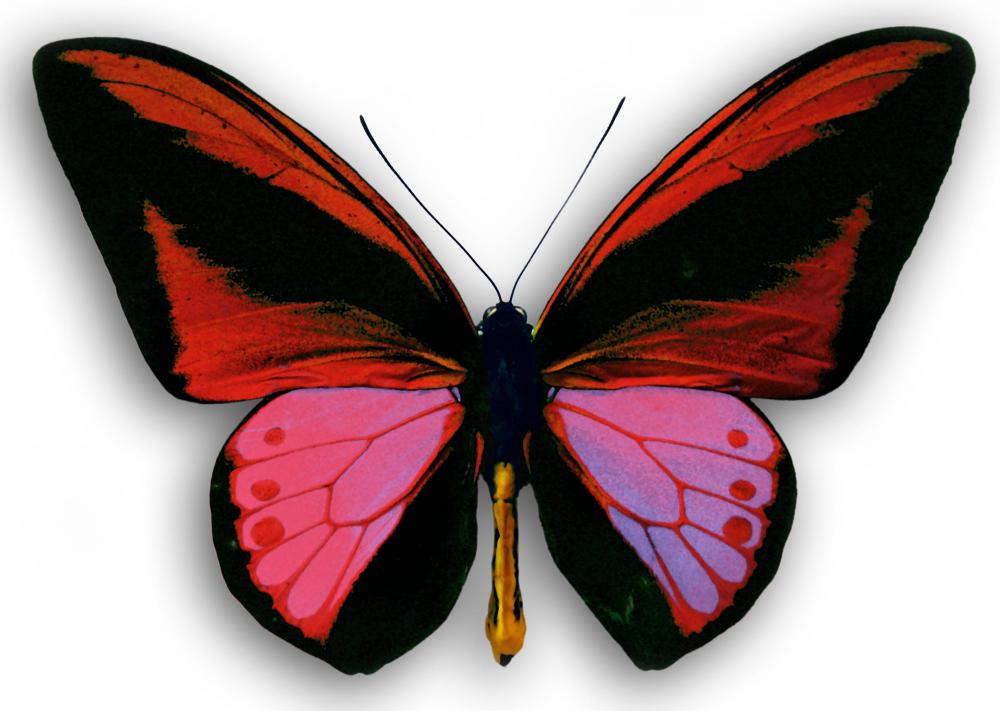What Is in a Butterfly Habitat?
A butterfly habitat must contain the same things that all living creatures need. The environment should contain sufficient food, water, and shelter to maintain the animal. In addition, the habitat ought to provide conditions favorable for breeding.
The food source needed in a butterfly habitat varies among species. Some adult butterflies need no food at all and dedicate the whole of their adult lives to mating and laying eggs. Most butterflies, however, suck their food through a long straw-like tube called a proboscis. As such, a liquid food source is needed.

Although a few species of butterflies have been documented to feed exclusively on one type of flower, most are happy with nectar from any flowing plant. Fruit juice, tree sap, and sometimes even liquefied dung are also potential food sources. The Common Imperial species of butterfly, native to India, feeds almost exclusively on the liquid components of dead animals.

Often, a butterfly habitat is influenced not by the diet of the adults but rather by the nutritional needs of the larva. To assure the survival of her young, a female butterfly lays eggs only on those plants that the caterpillars will eat. Unfortunately, most butterfly offspring are very picky eaters. Monarch butterfly caterpillars, for example, feed only on milkweed leaves. The larva of zebra butterfly are just as particular, choosing to dine exclusively on the leaves of the pawpaw plant.

Almost all insects need liquid to survive. Butterflies, however, neither require nor can make use of large bodies of water. As most of the average butterfly’s diet is comprised of liquid food, a butterfly habitat usually does not require sources of additional moisture. Those species that do occasionally need extra water can generally absorb it from moist soil or sand.

Butterflies have different housing needs during each of the periods of their growth. The need for protection against rain, wind, and predators is common throughout the life of the butterfly. The primary concern, however, can vary among developmental stages. An ideal butterfly habitat will have several housing possibilities for each life cycle.
In the beginning, the eggs of the insect, by necessity, must be attached to host plants, and it is advantageous for those plants to be protected from heavy rains and harsh sunlight. In the beginning of the larval cycle, caterpillars should have some overhead coverage to help protect against birds and other predators. Later, these caterpillars require sturdy, dry surfaces on which to attach themselves during their chrysalis stage. In adulthood, protection from rain is of foremost concern as the wings of the butterfly must be kept dry for flight.
AS FEATURED ON:
AS FEATURED ON:














Discussion Comments
@ocelot60- Another plant that you may want to consider adding to your butterfly habitat in your garden is the butterfly bush. This plant is hardy, easy to maintain with simply pruning, and looks great in the midst of a variety of flowers. It has blooms that look similar to lilacs, and produces a scent and nectar that butterflies love.
In the warm months of summer, you will see a variety of large and small butterflies flying around the butterfly bush every day. This unique plant not only attracts many butterflies, but entices them to stay and hover around the sweet-smelling blooms for hours at a time.
I love to watch butterflies flying around in my garden, so each year I plant a patch of flowers that attract them. From my kitchen window, I enjoy the colorful blooms and the different types of butterflies that feed off of them from mid-summer though the early autumn months.
In the springtime at the height of planting season, I plant flowers such as marigolds, asters, lilies, snapdragons, and zinnias in a section at the front of my garden. When they are in full bloom, these colorful flowers attract butterflies by the dozens. As the butterflies help to pollinate the flowers, the cycle continues as more bloom and attract more butterflies. This butterfly habitat is easy to grow and provides months of enjoyment.
Post your comments